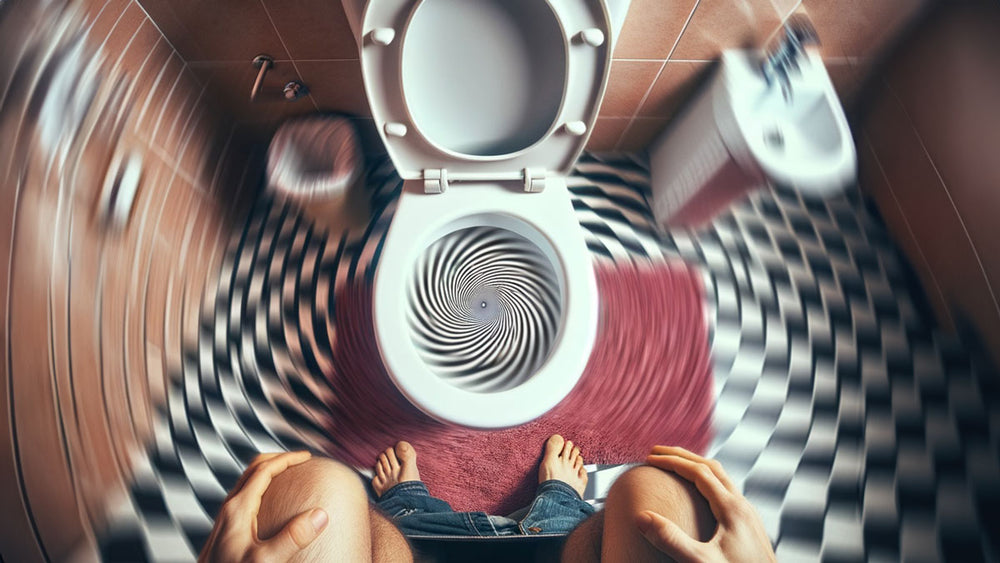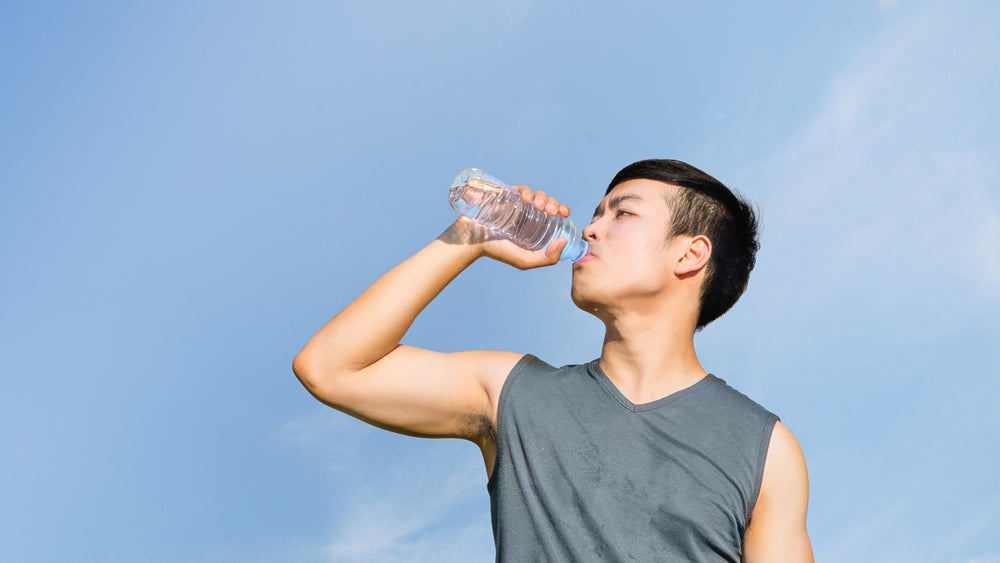Unlocking the Causes of Bathroom Dizziness and How to Address Them
Have you ever gone to the bathroom and sat down to do your business only to find your world spinning and have a wave of concern wash over you? Whether you see stars, feel the onset of vertigo, or full-on pass-out, something is obviously wrong. If this is often enough to be unsettling, you want to get to the root of the problem. You can take solace knowing there are some simple things you can troubleshoot to see if you can prevent it from happening.
A few different things can cause dizziness; changes to nutrition and hydration can help correct this. Allow me to be your navigator through the maze of understanding the physiology of this lightheadedness. First, we want to start by understanding the sensations and potential causes.
Orthostatic Hypertension (OTH):
Orthostatic hypertension is a form of high blood pressure where the body cannot regulate blood pressure during movements, most notably when moving from lying down to standing up. There are some suggestions that orthostatic hypertension can lead to traditional hypertension, but there is not enough evidence to elicit treatment. As an athlete, I have experienced this most of my life. My resting heart rate gets very low, so if I jump up too quickly, it takes my body a second to adjust. If this happens on the toilet, I must remember to get up slowly so I do not pass out. Gradual position changes are one of the suggested treatments for anyone experiencing OTH. Other treatments include staying well-hydrated, monitoring your salt intake, and checking in with your medical provider to see if compression stockings or further interventions are necessary.
Orthostatic Hypotension (postural hypotension):
On the flip side of orthostatic hypertension is orthostatic hypotension, otherwise known as postural hypotension. This is when your blood pressure suddenly drops when moving from lying down or sitting to standing up. Prolonged sitting, for example, on the toilet for extended periods and then standing, can contribute to the development of orthostatic hypotension. Some people feel dizziness, lightheadedness, and even fainting with this condition, which is why it is advisable to get checked out by a healthcare professional to address any underlying issues to prevent these episodes. Typically, just like with orthostatic hypertension, monitoring fluid and sodium intake is recommended, compression stockings may be recommended, and for some individuals, alcohol may need to be avoided as it can worsen this condition.
Vasovagal Syncope:
Generally set off by a trigger, vasovagal syncope is when your blood pressure and heart rate drop suddenly simultaneously. Triggers can be external, like seeing blood or an open wound, or triggers can come from certain body functions. Examples include urinating, having a bowel movement, dehydration, skipping meals, or standing for long periods. I can personally relate to having these episodes. I have narrowed these episodes down to dehydration, specifically for me, while performing strenuous exercise over long periods. Maintaining adequate hydration and nutrition while I am running has reduced the occurrence of vasovagal syncope. I have also introduced salt and electrolyte tabs to help keep up blood volume. Since doing this, I have been successful at running marathons and Ultra marathons without having any fainting episodes or GI issues due to vasovagal episodes.
Low Fluid Balance (Hypovolemia):
A low fluid balance, or hypovolemia, is when your total body fluid volume is low, so your heart has limited fluid to pump, causing high blood pressure at first. If fluid loss continues without any replacement, then hypovolemic shock occurs, and blood pressure drops, compromising organ function. Fluid loss can come from sweating, loose stool output, or vomiting. It is important to replace fluid losses quickly and effectively to prevent hypovolemic shock. If you are sick and having fluid loss, you may need to get IV fluid treatment to replace fluid needs faster than drinking. If you are losing fluid through sweat, ensure you continue to consume fluids throughout the activity you are performing. To read more about replenishing your fluid and electrolytes, check out this great article on Foodguides.com.
Nutrition Considerations for Dizziness:
A lack of nutrition and proper fueling can cause dizziness from reduced blood sugar levels. This is easily resolved by eating a balance of carbohydrates, healthy fat, and protein-rich foods. I get it; you might forget to eat when you are busy. However, pausing to fuel yourself appropriately is essential to prevent lightheadedness, among other things. As mentioned above, you can lose electrolytes through sweat and drain your glycogen (stored sugar) when participating in strenuous activities over long periods. Nevertheless, when you do not adequately fuel yourself, you can become deficient in nutrients that keep you moving and healthy.
Preventing Dizziness in the Bathroom
As you can see, there are a few things you can easily adjust that can help you prevent dizzy spells with regard to the bathroom. If you still find yourself spinning even after making changes, you will need to bring this to the attention of your doctor to make sure something more serious is not happening. The above-mentioned culprits are very common, and as you have read, the treatments are easy and non-invasive. Doing these things can keep you moving and not leave you in a compromising state of embarrassment in the bathroom.
- Jordan, J., Ricci, F., Hoffmann, F., Hamrefors, V., & Fedorowski, A. (2020). Orthostatic Hypertension: Critical Appraisal of an Overlooked Condition. Hypertension (Dallas, Tex. : 1979), 75(5), 1151–1158.
- Mayo Foundation for Medical Education and Research. (n.d.). Orthostatic hypotension (postural hypotension) - diagnosis & treatment. Mayo Clinic.
- Mayo Foundation for Medical Education and Research. (2023, March 2). Vasovagal syncope. Mayo Clinic.
- Cleveland Clinic. (n.d.). Hypovolemia symptoms, causes & treatment. Cleveland Clinic.





















Comments
Join The Conversation...